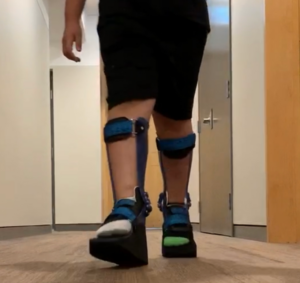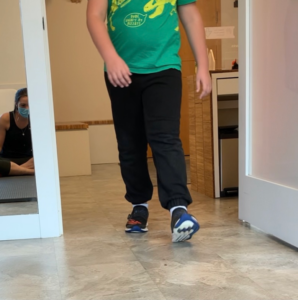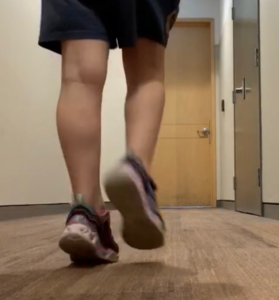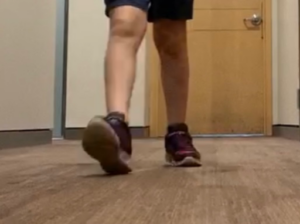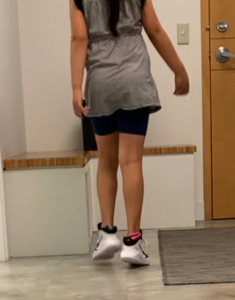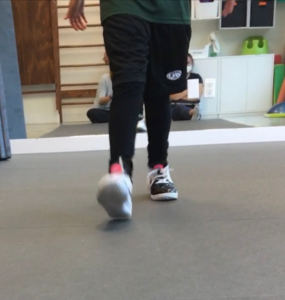5 tips for choosing shoes for your toddler
Choosing shoes for your toddler can be overwhelming! There are so many brands and styles to choose from. The shoes you put your toddler in can impact their foot development, arch development and overall comfort. Here are 5 important tips to consider the next time you are choosing shoes for your little one:
- A wide toe box. You want to ensure that the front part of the shoe (the toe box) is wide enough to fully allow your child’s foot to splay/spread out when they are walking. This is important for their balance and both the structural and muscular development of their feet.
- A flexible sole. You should be able to easily bend the shoe when you are pushing from the toe and the heel. This will allow their feet to move more naturally while they are walking and promote the development of their arches by allowing their intrinsic foot muscles to engage.
- Firm heel cup. The heel cup should be firm – if you pinch the heel of the shoe, it should maintain shape. This will provide adequate support for your child’s feet.
- The right size. It’s important to have shoes that fit your child properly, resist the urge to buy shoes that are too big! The “flex point” of the shoe should line up with where their foot bends when walking. If a shoe is too big, then these two spots will not align. Their feet will be less supported in a larger shoe and can also lead to more tripping and ankle injuries.
- Secured. Having shoes with velcro or laces are ideal to make sure they fit snugly on your child’s feet. This will prevent “toe gripping” and decrease tripping. Toe gripping happens when shoes are too big or aren’t secured onto the foot well enough. It can lead to instability and over time lead to foot or leg pain.
Proper footwear is so important, especially in the early years! If you have any questions please reach out, we are always happy to help!

